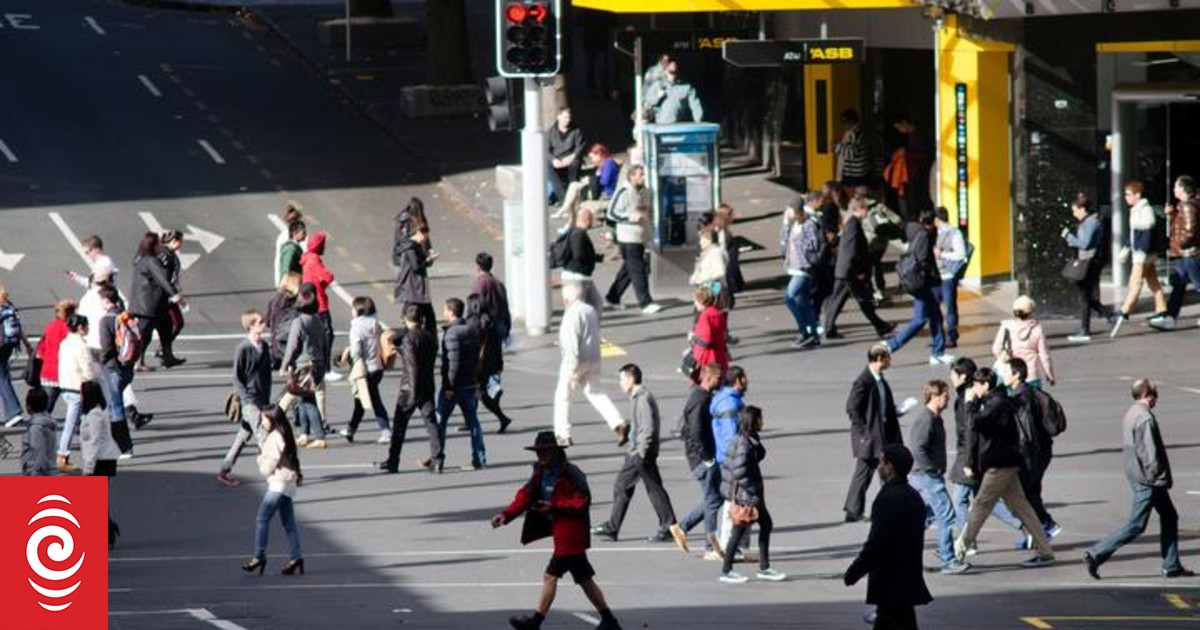Photo: 123RF
New data shows there were 27,850 fewer jobs in New Zealand in June compared to the year before, and young people are feeling the impact of the weak labour market.
Stats NZ’s latest data shows the number of filled jobs was up 0.1 percent month-on-month but down 1.2 percent year-on-year.
Compared to the year before, construction had lost 12,169 jobs, or 6 percent, manufacturing 5850 jobs, or 2.5 percent, professional, scientific and technical services 5150 jobs, or 2.7 percent, and admin and support services 4860 jobs, or 4.7 percent.
Education and training and primary industries added jobs.
People aged 15 to 19 had 10 percent fewer jobs, those 20 to 24 had 3.5 percent fewer and those ages 25 to 29 had 3.9 percent fewer.
Hugh Hawkins, 23, has been looking for a job since finishing an honours degree last year.
“Now we’re in late July and I’ve managed to find a tiny bit of casual work through connections of people I know. Otherwise I’ve been serially ghosted with absolutely no success.”
Hawkins had set a target of 10 applications a week.
“A couple of jobs I was excited for, I felt genuinely directly qualified for, I’ve gone for and not reached the interview stage. The rejection email often comes with a total of applicants they’ve had and one I was qualified for had 630 people apply.”
It seemed a widespread problem, Hawkins said. “Chatting to my coworkers they’re virtually all in the same situation. They have to rely on the benefit to pay rent with casual work on the side. People from different walks of life, most young and very qualified…I worked hospitality roles through uni and took volunteer roles and internships relevant to my degree to set myself up as well as possible… if I’m struggling it must mean terrible things for what other people are also going through.”
Infometrics economists noted that May’s month-on-month increase in filled jobs had been revised down in the latest data to a decline. “June’s narrow rise could also be revised to flat or negative growth in future releases.”
Auckland had a 1.9 percent year-on-year fall in filled jobs and Wellington was down 2.3 percent. Canterbury was up 0.1 percent.
ASB senior economist Mark Smith said it had been noticeable in the last year or so that young people were being most affected.
He said there were likely to be more job losses than the data indicated because some businesses would have added roles during the year.
“This is normally a cyclical phenomenon. The hope is that some will go into training if it’s available but it’s not available for everyone.
“The labour market tends to be the last thing to move.”
He said it was concerning that the revisions in the data in recent months had all been down.
“The trend is still falling. It has dragged on… Covid was huge and there are hangovers from that.”
He said the unemployment rate was likely to move higher in the coming months.
Some people who had lost work had dropped out of the labour market, which meant the participation rate fell. The unemployment rate only counts people looking for work.
“If that participation rate did not keep falling we would have a much higher unemployment rate, it would be closer to six.
“Really the primary sector and the South Island are the good news stories. There is weakness still in the goods sector and the major centres.”
BNZ chief economist Mike Jones said he still expected the “mid-year activity air pocket” would pass.
“The underlying drivers of the recovery remain in place and should reassert themselves in coming quarters.
“But the recent weakness does push back the likely timing of the eventual labour market recovery. We doubt the current undershoot of firms’ labour requirements relative to worker availability will change appreciably this side of Christmas. Our forecast peak in unemployment has been shunted out to 5.4 percent in the final quarter of the year. Wage growth should thus continue to slow through to the middle of next year.”
Green Party spokesperson for social development and employment Ricardo Menendez-March called on the government to “take charge and create jobs that help us build a better future”.
He said the Green Job Guarantee in the party’s alternative budget would create 40,000 jobs to rebuild infrastructure, restore nature and build state housing.
“We know people out there need opportunities, instead they are being punished and pushed into poverty.”
